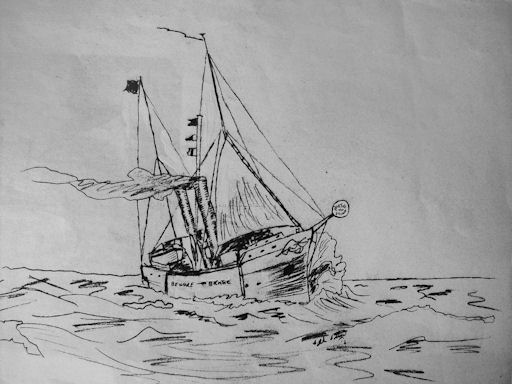A SHIP'S BRAKE.

From ‘The Western Daily Mercury’- 23rd September 1882
In 1882, John McAdams, of Boston, claimed to have perfected an arrangement which he asserts would bring any vessel, however large and fast-steaming, to a dead stop in from one to ten feet, and will hold her steady as a rock, with full steam on. His device consisted of a pair of iron shutters, or “fins”, hinged one on each side of the stern post of the vessel and shutting close to its sides from the stern post forward. The “fins” are kept tightly closed by a simple apparatus on deck, which is connected with the pilot-house, and when “let go” the stays connected with the “fins” allowed them to open at right angles with the ship, bringing it at once to a standstill and holding it fast as if anchored. When the fins were released in an experiment it proved that no jarring or shock was experienced, such as was felt on a railroad when the brakes were applied. The water, being a yielding body, acted as a spring or cushion. For foggy weather or darkness a self-acting guard was rigged out at the bow of the vessel, and if it meet with any rigid body in the path of the ship, when touched it at once released the “fins”, and stops the vessel before it could reach the obstruction, without any movement or direction of the pilot or navigating officer. When closed the fins follow the outline of the ship, and being flush with its sides could in no way diminish its speed. The inventor’s first experiment was made with a 37 & 1/2 foot fast steam yacht, to which was attached a pair of “fins” 4 feet long by 2 & 1/2 feet wide. This power proved to be at least twice as much as was needed to stop the vessel instantly when at full speed.